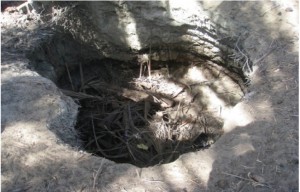
Three-Year Initiative to Help Improve Water Resource Management in Burkina Faso, Mali, and Niger
by Atayi Babs
WaterAid announced today plans to support 29 drought-prone West African communities in proactively managing local water resources needed to prepare for, mitigate against and recover from disaster.
These changes will, in turn, strengthen their resilience to threats such as increasing demand for water, environmental degradation and climate variability. They will also ensure that enough water is available for daily use ranging from drinking to bathing, laundry, cleaning and watering plants.
“Similar to many places where WaterAid works, West Africa is disproportionately affected by disasters including droughts, floods, famine, cholera and—most recently—Ebola,” WaterAid America CEO, Sarina Prabasi.
“WaterAid is pleased to be able to support local communities better cope with natural disasters by bolstering water and sanitation infrastructure, improving preparedness and preventing the spread of deadly diseases, including potentially diarrhea.”
The 29 West African communities set to work with WaterAid each struggle with high levels of poverty that are exacerbated by recurrent complex emergencies, frequent food insecurity, cyclical drought, seasonal floods, disease outbreaks and rapidly changing land use. These conditions not only compromise livelihoods, agricultural production and human and animal life, but also destroy water supply infrastructure and latrines.
Broken water and sanitation systems force communities to revert to drinking untreated water and going to the bathroom in the open. These practices encourage the spread of disease at a time when health and support resources are particularly limited.
Made possible in part by a grant from the Margaret A. Cargill Foundation, WaterAid will train community observers to collect, record, store and present water supply data to predominantly illiterate community members.
In Ghana, Liberia, Nigeria and Sierra Leone, the project will further support local leadership by making sure that they have the skills and tools needed to analyze available data and assess potential threats to the community’s water quantity and supply.











